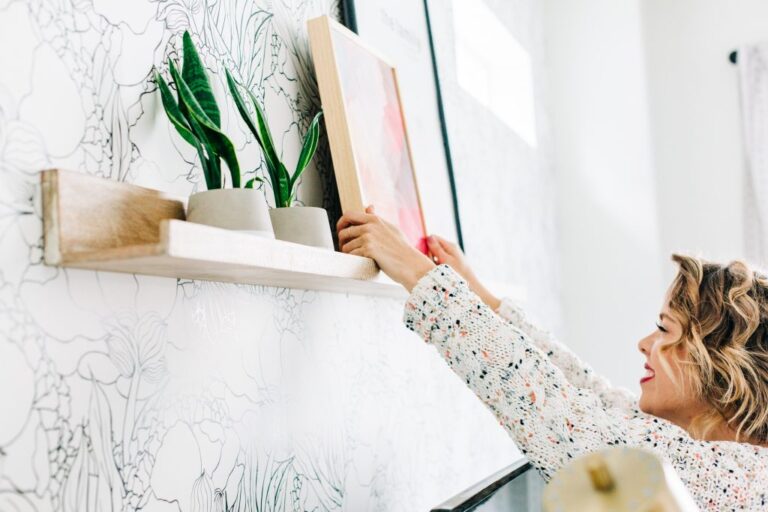You will admit that types of our home or workspace really know how to be boring. Today this problem is very easy to solve. The walls of the living room, bedroom, office, or any other space can be decorated in different ways. There are paintings in various techniques, photographs, framed inscriptions, and much more. Rarely does anyone remain immune to wall art?
A good picture and properly placed will always attract attention and admiration. Still, putting art of any kind on a wall is by no means an easy process. Many people think that you would need just a hammer and a few nails, and the whole thing is done in a few minutes.
In addition to the feeling of how the picture should stand, we must also be familiar with the wall on which it will stand. Are there any electrical hoses or wires in place; whether it is strong enough to carry a larger image, etc.?
However, in this text, we will deal more with arranging and that is why we bring you 5 mistakes to avoid when arranging wall art.
1. The proportions of the wall do not matter
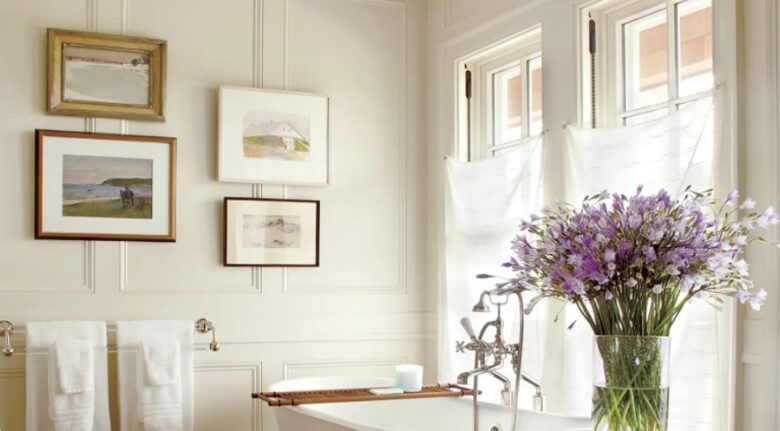
This is one of the first mistakes you can make. When it comes to art, proportions in every sense should be the first thing on the list. You have to keep in mind how big the wall you are posting the picture on and try not to make it too small or too big in relation to the wall. There is no compromise here. So we recommend that you first measure the wall and decide what size of the picture you should think about, not the other way around.
2. The higher the better
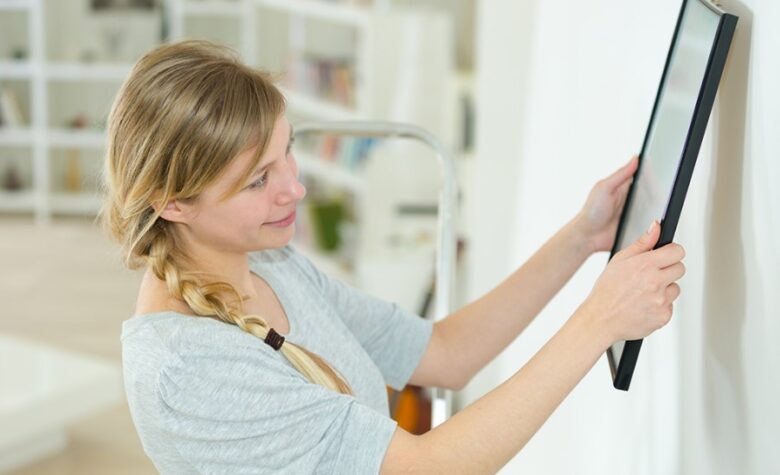
Not at all! If you have ever visited an exhibition of paintings or galleries, you may have noticed that the paintings are placed so that you can see them clearly, without much effort. The center of the image, or at least the main motif in the image, is best at eye level. It’s the same when you install mirrors. You will never hang the mirror too high because your goal is to see yourself in it, right?
Our suggestion is that the picture is approximately 150-160 cm from the floor. Mostly it is the average eye height. Perhaps it would be best to take an average according to the views of your household. Yet it is you who will spend most of your time enjoying the artwork.
There is another rule here if you hang a picture above the furniture. It should be 15 to 25 cm above the furniture. No more and no less.
3. Wall decor has nothing to do with furniture
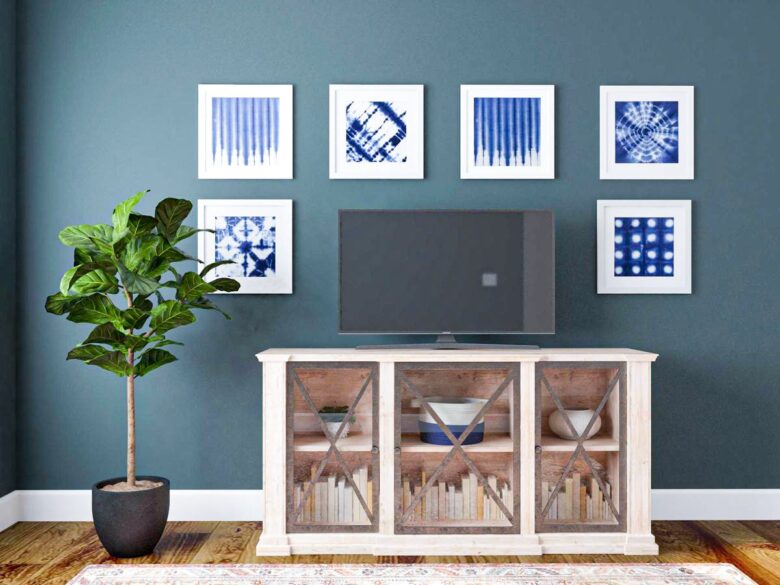
Oh, it has for sure! In addition to the proportions of the wall, it is very important that the size of your paintings is in proportion to the pictures. Wide and large furniture and other decorations should be accompanied by huge wall art. But vice-versa as well: small things and furniture are accompanied by smaller works of art. The goal is to gain a natural balance without much deviation.
If you have a sofa next to the wall, we suggest that the picture take up a space of 2/3 of the total length of the sofa. If, for example, you put a picture above the fireplace, it should not be wider or narrower than the fireplace itself.
4. I’m going without a plan, art is spontaneous
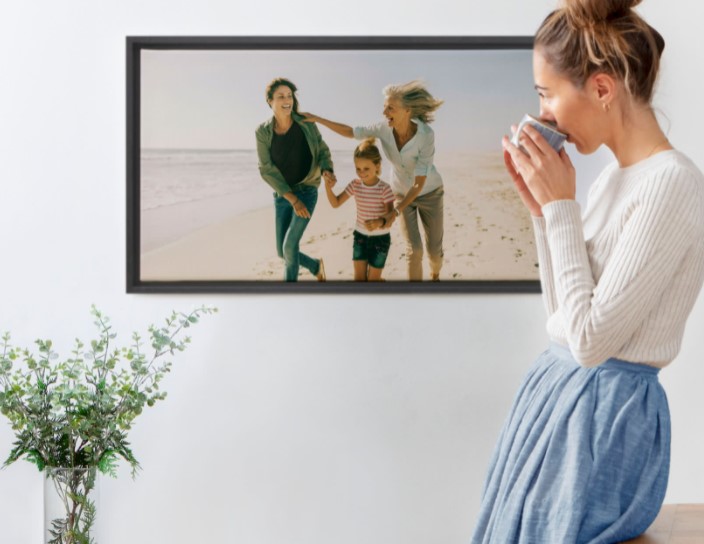
Do not do this at all, otherwise, there will be a couple of extra nail holes on your wall. It is better to have a preliminary plan and start this project thoughtfully and with a certain vision. This is not something you can move as you come up with, so take the project seriously. The best thing you can do at the beginning is to make a plan! Observe the walls you want to decorate and make a vision in your head where each picture should stand and what it will look like. If you don’t have the best visualization, paper can be very helpful. You need to cut out the paper in the shape of the wall decor where you want to hang it. Glue them to the wall and determine the ideal place. Make sure that there is no strong glue so that you do not get paint or a layer from the wall later. This little trick with the papers on the wall will give you a clear picture of whether your idea is good or not, and they can be moved very easily.
This way you will avoid unnecessary holes in the wall and you will save your time. When you have laid out all the paperwork properly, observe your plan from several angles. If from every corner of the room it seems to be in good proportions and position, this is it: the project has succeeded.
Of course, here as well you must take into account what kind of wall you have and what material it is made of. If the decor you are installing is quite heavy, it is better to drill the wall with a gimlet because the nail will not be enough or safe.
5. The more the better
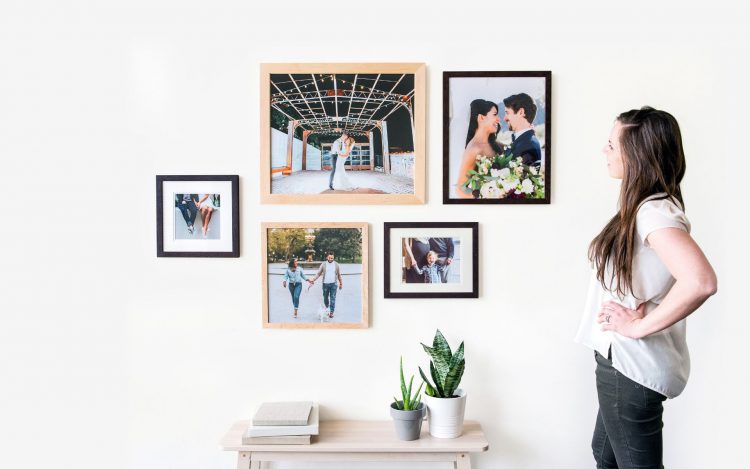
Art is subtle. It does not tolerate any exaggerations because then it ceases to be what it really is. This does not mean that there should not be a large number of works of art on the wall, not at all! It is only important to have a measure and a limit. If your wall is big enough, this probably won’t bother it much. But also, it would be really insane to think that the same number of works of art can be hung on a 6 m long wall as well as on a 4 m long wall. If you’re not sure of your own assessment, here’s a little help: visually, two larger images always look much better when placed correctly than 6 smaller ones, although they may take up the same space. If you still have no idea what images could decorate your desired space, check out this website and find the right one.
If you are still sure that you want more artwork in your house, maybe you should concern about some family photos or something similar, but please take care of the space between the pictures. Together, they should be compact and represent one whole, one story. It would not look neat if they were too crowded or there is uneven spaces between them. We recommend that the distance is between the photos is 5 to 7 cm.
Now that you have certain clues and guidelines you can get down to business. Whether you place pictures, portraits, decorative objects, or photographs, turn your space into a small paradise with harmony and symmetry.

